70% of waste-pickers handle discarded sanitary pads mixed with household waste; high risk of infection
A study by Toxics Link shows that menstrual waste is 100 per cent non-segregated in Delhi and reaches its landfills. Almost 70 per cent of waste workers always find menstrual waste mixed with household waste. Only 11 per cent waste workers wear proper protective equipment before handling menstrual waste.

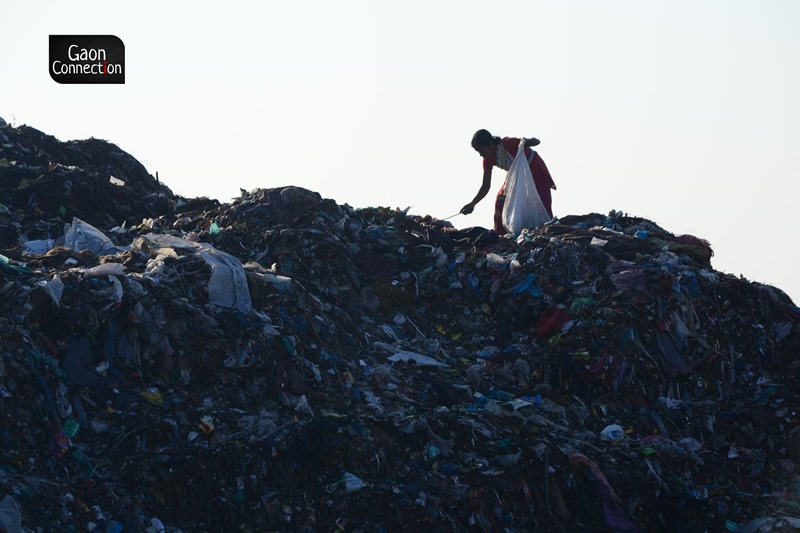
Unhygienic working conditions for waste workers pose the risk of infectious diseases among them. Photo: Abhishek Verma
Every month during menstruation, commonly known as periods or mahavaari, women use a variety of things ranging from rags to sanitary pads. These menstrual products — sanitary napkins, tampons, menstrual cups, period panties — are either reusable or discarded after single use.
But what happens to the sanitary pads after they are used and discarded?
At least 12.3 billion sanitary pads (mostly non-biodegradable) are dumped every year in India, which is equivalent to 113,000 tonnes of waste. This data was recently released by New Delhi-based environment group, Toxics Link, as part of its new study titled ‘Menstrual Products and their Disposal’.
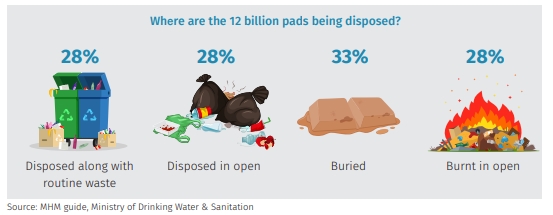
Each pad contains plastic which is equivalent to around four plastic bags. A single commercially available non-organic sanitary pad takes over 250-800 years to decompose or may even never decompose at all, claims the study released on June 3.
According to the National Family Health Survey (2015-16) report of the Health Ministry, 48.5 per cent of women in rural areas use sanitary pads while 77.5 per cent of urban women use them. Overall, 57.6 per cent of women use sanitary pads in India.
This menstrual waste ends up in landfills, where it stays for centuries and over the years is expected to add to the microplastic pollution, informed the Toxics Link report. Used pads often also end up clogging drains and polluting water bodies.
Also Read: The Pandemic and Pollution: Handling the packaging waste of increased online shopping
Health risks
Environment impact aside, these non-biodegradable sanitary napkins are also linked to health issues in women. The Toxics Link study shows most of the non-biodegradable sanitary pads contain volatile organic compounds [VOCs], phthalates, and other harmful compounds which can cause conditions ranging from nausea and fatigue to even cancer.
Short term exposure to VOCs can lead to irritation of the eyes and respiratory tract, visual disorders and memory problems. Long term exposure can induce nausea, fatigue, loss of coordination, damage to the liver, kidneys and central nervous system and can also cause cancer, warned the study.
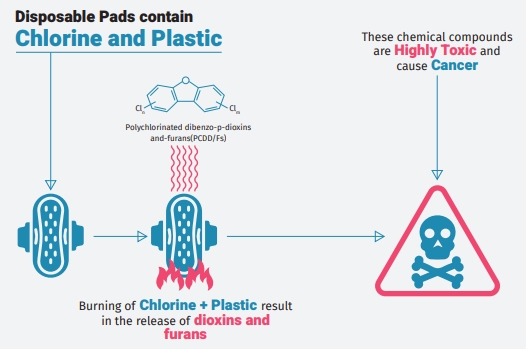
To promote menstrual hygiene, the government has made an effort in the past few years so that more and more girls and women use sanitary pads, but there have been no guidelines for their disposal, say the authors of the report. Many girls and women, especially those living in rural areas, don’t know where to dispose of these sanitary pads.
Also Read: Improving the state of menstrual health during Covid-19
Menstrual waste and waste pickers
According to the Toxics Link study, in Delhi, sanitary waste is 100 per cent non-segregated at the municipal or landfill level. In other words, nobody separates or picks up segregated menstrual waste from household waste. Almost all of it reaches the landfill.
The study has also raised concerns on improper disposal methods and non-segregation of menstrual waste from household waste. As per the study, 39 per cent of women throw their sanitary napkins in common household bins after wrapping them.

Almost 70 per cent of waste workers always find menstrual waste mixed with household waste. Only 11 per cent waste workers wear proper protective equipment (PPE) before handling menstrual waste, the majority of women waste workers are devoid of any PPE.
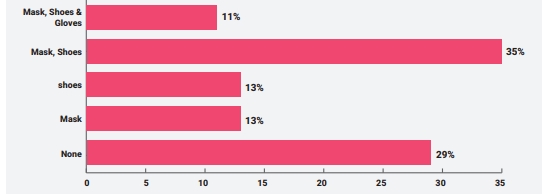
This leads to unhygienic working conditions for waste workers, and posing the risk of infectious diseases among them.
Incinerator issues
To dispose of the sanitary pads, many small-scale incinerators are being installed in various establishments like rural schools, colleges, public toilets, and hostels. The recent study highlighted that most of these sanitary waste incinerators are operating without any guidelines. Discarded pads are burnt at the wrong temperature causing emissions of harmful carcinogenic gases, it alleged.
“Improper burning of used pads in these low cost, low-temperature incinerators can result in the emission of dioxins and furans, causing more harm to the environment and our health. There are no tests or monitoring done which is a serious gap,” said Priti Banthia Mahesh, chief programme coordinator at Toxics Link.
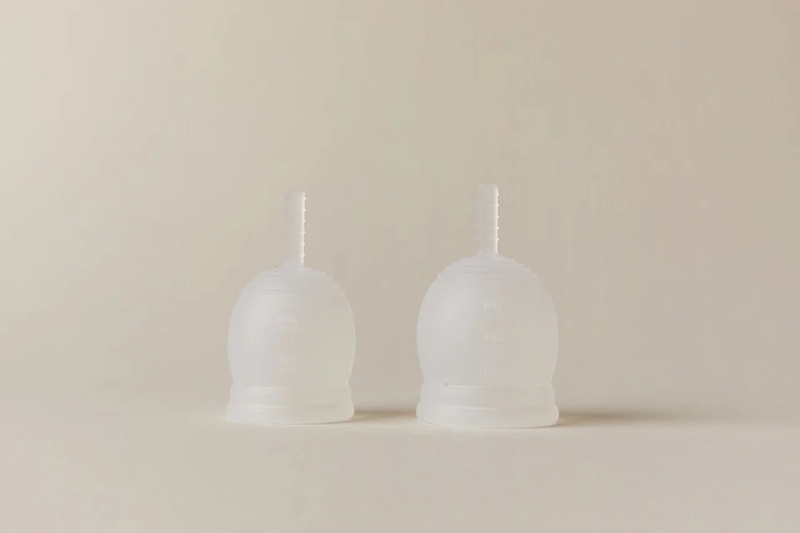
Alternatives
The first choice for an alternative to normal sanitary pads by most women is organic disposable sanitary pads followed by menstrual cups, highlighted the study.
One menstrual cup can last a woman for 10 years. It is made of silicon, so its disposal is not harmful to the environment. Menstrual cups contain no plastic as it is made up of medical-grade Silicon.
But ease of availability followed by high pricing for these products are the biggest barriers in shifting to eco-friendly sanitary products, noted the study. The price of a cup is Rs 500-700. However, it is only a one-time expenditure.
Meanwhile, many women do not have any knowledge about other products like period pants, tampons etc.

